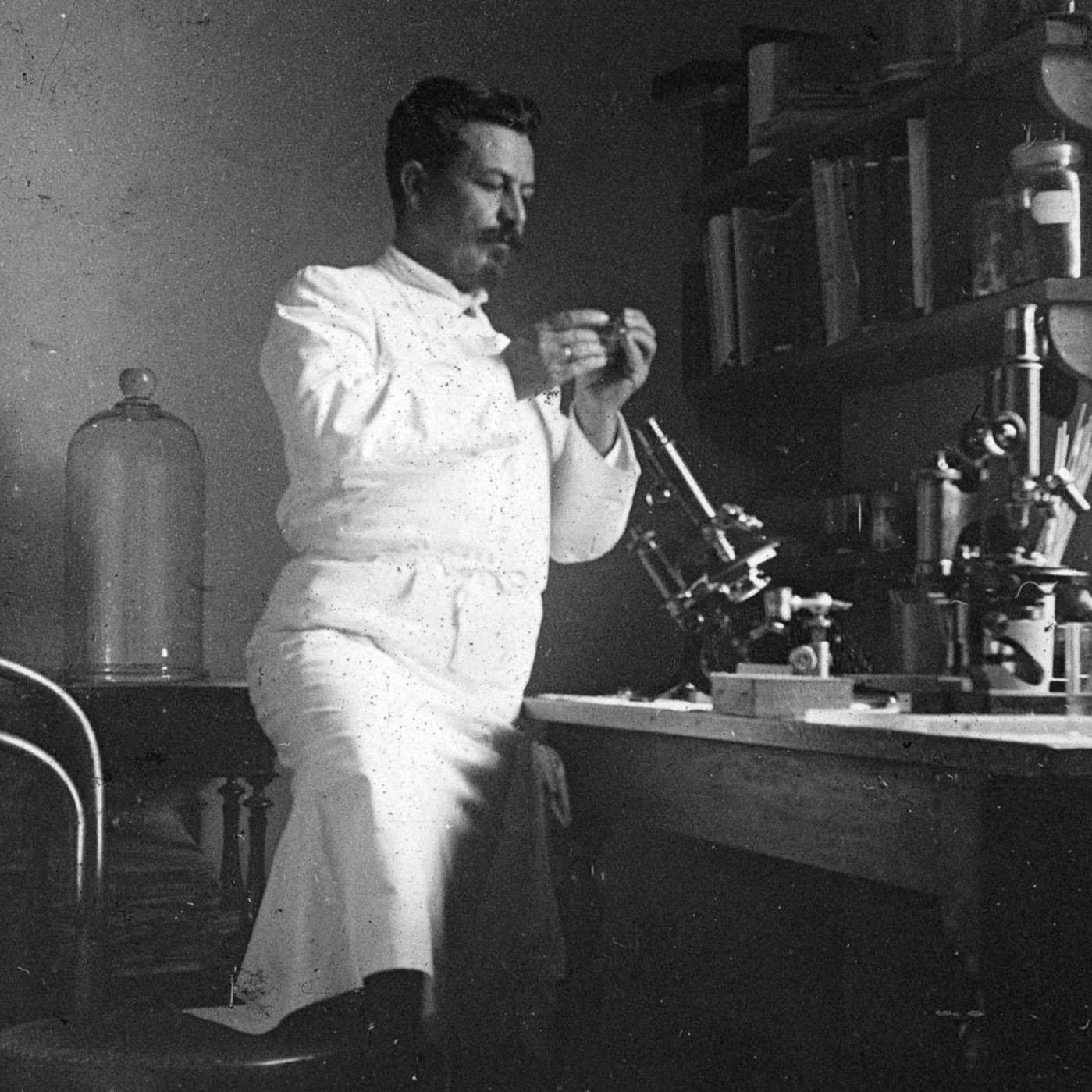
Plague, yellow fever and cholera
Joining the Institut Pasteur at 37, he worked alongside the first group of Institut Pasteur scientists. Two years later, he was sent to the frontline of the plague in India, where he made his major discovery: the role of fleas in disease transmission. He then headed up the Institut Pasteur in Saigon, Vietnam. Two years later, he took part in a lengthy assignment to Brazil to study yellow fever and come up with preventive measures. On his return to France, he taught at the École d’application du service de santé des troupes coloniales in Marseille, and then went to Martinique on another yellow fever assignment. He then tackled cholera in Constantinople where he was seconded to direct the Imperial Institute of Bacteriology, before being appointed to head up medical services for troops in Indochina. This would be his last overseas assignment: in conflict with the military authorities, he left the colonial troops at the age of 56 and withdrew to his native Drôme region, where he devoted his time to public health work in the region.
A renowned botanist
While Paul-Louis Simond is known for his many scientific accomplishments, he was also an enthusiastic botanist. The Museum of Paris, to which this botany enthusiast donated 226 watercolors of orchids from Indochina accompanied by his own handwritten descriptions, named a dozen orchids after him. This flower also features on his ex-libris alongside a salamander (for his early research at the Institut Pasteur), a rat, a flea and a yellow fever mosquito.
Discovery in Karachi: the flea, vector of the plagueIn 1897, at the request of the Institut Pasteur, Paul-Louis Simond took over from Alexandre Yersin, conducting a serotherapy campaign against the bubonic plague around Bombay, India, which was suffering a severe outbreak. He traveled extensively throughout the country and patients flocked to see him, he wore himself out… and he recorded his observations. Having noticed that some patients had small blisters suggestive of insect bites, he came to believe that rats were not transmitting the disease directly to humans. In Karachi, where he was later sent during a plague outbreak, he decisively proved that fleas transmitted the plague, from rat to rat and by deduction from rat to humans. He wrote: “That day, June 2, 1898, I felt an inexpressible emotion at the thought that I had just uncovered a secret that had troubled humanity since the plague first appeared in the world.” Associating rat extermination with insect control, his discovery considerably reduced the incidence of the disease in many countries. |
Timeline of the life of Paul-Louis Simond> July 30, 1858 > 1882-1886 > 1886-1887 > 1890-1894 > 1895-1897 > 1897-1898 > 1898-1901 > 1901-1905 > 1906-1910 > 1908-1909 > 1911-1913 > 1914-1917 > 1919-1947 > March 18, 1947 |
Photo: Paul-Louis Simond Mission Brazil, yellow fever, 1901 - 1905 © Institut Pasteur/Musée Pasteur



